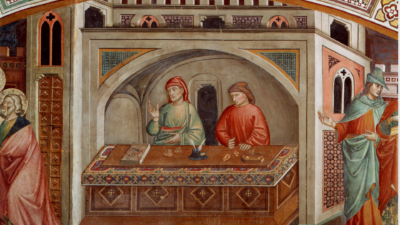ART of the deal: how a megafund gets the most from its managers
While scale and investment internalisation tend to go hand in hand, the circa $320 billion Australian Retirement Trust (ART) has been vocal about not wanting to hop on what it’s called the “internalisation roundabout”: the decades-long cycle of in- or outsourcing that usually occurs as a result of talented in-house teams deciding to strike out on their own to become managers for the market rather than the fund that built them up.
It’s instead become one of the few big funds to keep handing out billion dollar mandates to active stockpickers across the equities universe, and its scale yields “pretty unique access to manager capabilities and IP”, according to Peter Barany, ART senior portfolio manager,
“(Managers will) literally part the sea for us,” Barany tells ISN. “They really appreciate that we’re one of the last funds out there with a primarily external model in public markets. Where does that lead? It leads to the opportunity to seed new strategies; managers are willing to reserve a lot of capacity for ART to grow into, especially if we’re one of the only big institutions on their client list, which we often are.”
It also leads to the acquisition of what Barany calls “relationship and implementation alpha”.
“ART is allowed deep access to staff and capabilities at managers that we use,” Barany says. “We’re in constant dialogue with the portfolio managers on things like timing of cashflows, where we can maximise the use of manager crossing networks to reduce trading costs. We can do that because we’re on the phone with the PMs. We’re not just talking to the marketing person every month… we’re invited to company meetings with them, and we get great insights from them that can be applied to asset allocation or risk management or even HR and cultural matters.”
“We’ve got a manager in California that’s an expert on company culture. It’s a key factor in terms of how they select stocks, so we’ve used insights from them on teambuilding.”
ART still hands out massive passive mandates – in the vicinity of $50 billion or more – and Barany estimates that at the fund level the active/passive public markets split is about 50/50. That raises the possibility of duplication – paying active fees to a manager for exposure to a stock they already own in a passive vehicle. But while ART tries to make sure there’s little “redundant overlap” across its portfolio, Barany says that overlap isn’t always redundant.
“What we don’t want to do is build a portfolio with a large stack of managers and end up looking like the index while paying active fees for it,” Barany says. “But often it’s not a bad thing if you are replicating. If the manager’s got high conviction in a name we don’t mind if they’re holding the same stock we’re holding in a passive portfolio. In fact it’s pretty likely that there’s going to be some overlap, and we’re fine with that… We want our managers to express high conviction, because that’s what we’re paying them for.”
And while other big super funds have entertained the idea of lifting managers out and bringing them in-house – effectively buying what’s (hopefully) a top notch internal investment capability – Barany says that path is fraught with risk, and likely to erode the alignment it prizes in its external managers, which typically comes from having “skin in the game”; owning their own business or being invested in their own funds.
“If you’re lifting the manager out and putting them in a super funds, you potentially lose some of that alignment… you lose that, and you lose that drive,” Barany says. “And then there are those cultural issues that need to be thought through, where the culture in a manager might be quite different to the culture in a super fund. Think about all the ramifications that can cause in an investment team.
“It’s an interesting idea, but it’s not one that we’ve pursued. We still like the independence of investing in an external manager; we’re long-term investors, but if we see degradation in a manager’s investment process or turnover in staff we retain that ability to exit a strategy. If we’ve lifted out a manager, and put them in a fund, that becomes a much more difficult process to undertake.”











